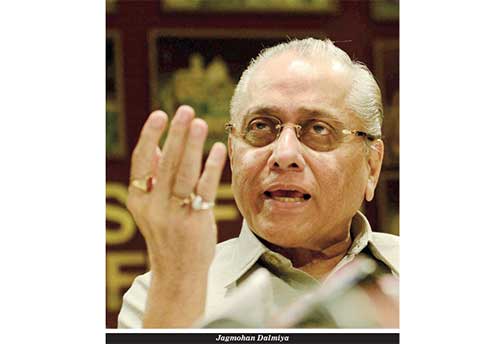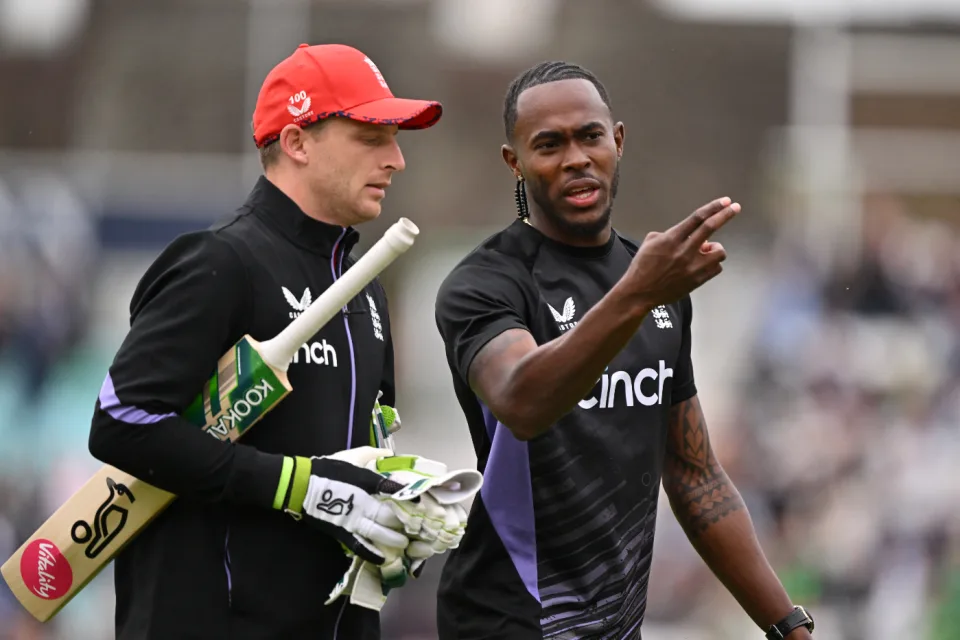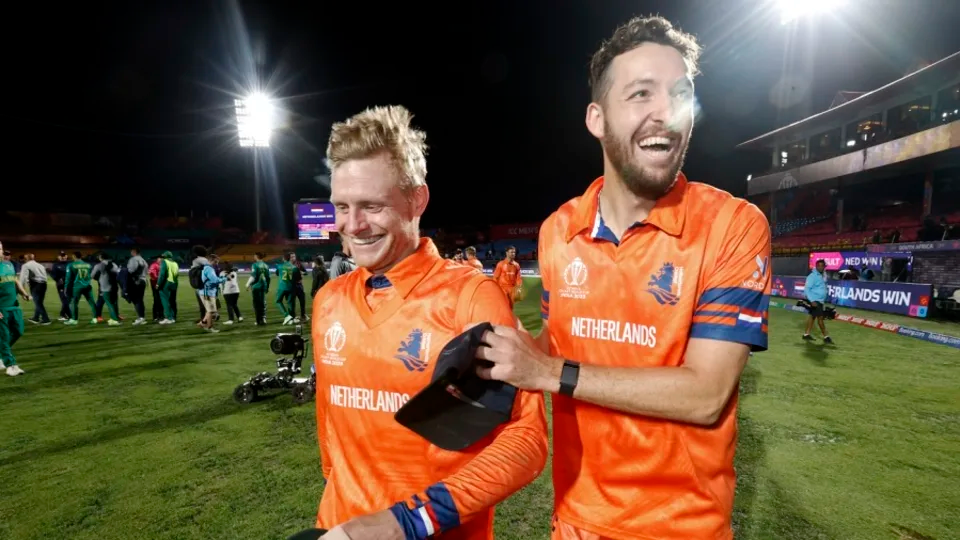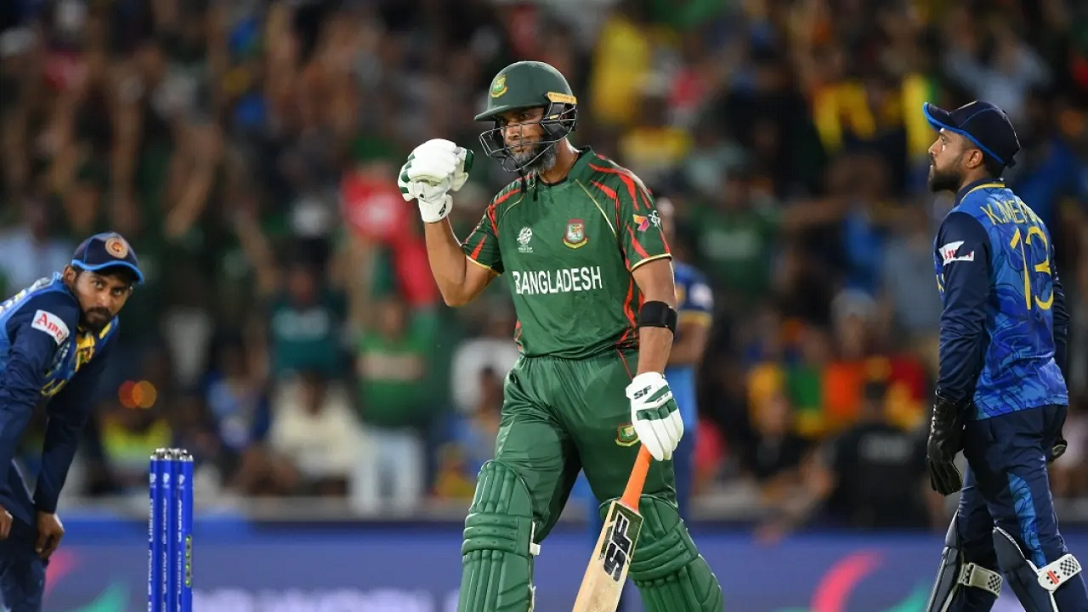Sports
Remembering Dalmiya on Silver Jubilee of Sri Lanka’s World Cup triumph

by Rex Clementine
A new term has entered cricket terminology – SENA countries – it stands for South Africa, England, New Zealand and Australia. Apparently, winning there or doing well in those countries is the yardstick to measure how good a player is or a team is.
SENA countries would not agree but it was Jagmohan Dalmiya who changed cricket’s finances. The business tycoon from Calcutta who was a key figure in forming the Asian Cricket Council in 1980s was instrumental in identifying the huge marketing potential of the sport especially through television rights. Dalmiya became the first Asian President of ICC and was instrumental in moving the game’s headquarters from Lord’s to Dubai.
Dalmiya was also a dear friend of Sri Lanka. It is a little known fact that he became the President of ICC before becoming the President of the Board of Control for Cricket in India. It was as the Secretary of BCCI that Dalmiya made many of his smart moves that SENA countries loathed. He was the head of PILCOM – Pakistan, India and Lanka Committee that was set up to run the 1996 WILLS World Cup.
Dalmiya’s letters to the then Sri Lankan cricket board Secretary Neil Perera reveals much details about behind the scene moves of the Asian block in securing the 1996 World Cup to Asia. Sri Lanka’s representatives for the ICC meeting in 1993 were given clear instructions from President R. Premadasa to vote for South Africa. South African sports associations were using the immense popularity of Nelson Mandela for them to secure global sporting events. They had already secured the 1995 Rugby World Cup. The Cricket World Cup was going to be another feather in their cap.
However, South Africa’s bid had some serious issues. England wanted to host the event and so did Pakistan. With them unable to garner enough support, South Africa withdrew. Neil Perera saw the opportunity and convinced Pakistan to withdraw their bid too – because India would not support them. Instead, Perera wanted India, Pakistan and Sri Lanka to put out a joint bid. This proved to be a masterstroke. Pakistan was reluctant initially but later on agreed on one condition. Lahore should host the World Cup final. It was then agreed that India would host both semis. Cricket’s Asian stakeholders had a deal.
Like in every global sporting event, the organizers had to face many challenges. The biggest of them was the refusal of Australia and West Indies to honour their World Cup fixtures in Colombo. Their security concerns was summed up when Shane Warne said a ‘bomb might go off in Colombo’ while he was shopping. It was to Dalmiya that Sri Lanka turned to bail them out.
The Sri Lankan government convinced the Indian cricket supremo that the visiting teams would be presented with security accorded to the Heads of States. Dalmiya then in haste went onto put out a joint India-Pakistan team to come to Colombo and play a friendly match.
Now, convincing the Indian captain to play under a Pakistani captain or vice-versa was such a hard task; the fans would not simply accept something of this sort. Dalmiya had a smart move. First he appointed someone to manage the team. He needed a high profile figure. So he chose former Pakistan captain Intikhab Alam.
Dalmiya then called up Alam and said, “Now that Pakistan has the post of Manager, it is only fair that India gets the captaincy. I hope you agree. You have got to convince Wasim Akram to play under Mohammad Azharuddin.”
Dalmiya was able to put out a star-studded side. There was one more issue. In signing up WILLS as the sponsor, it had been agreed upon that two weeks prior to the tournament there would be no international cricket matches taking place. So, technically this match could not happen. Dalmiya solved that puzzle too. He called up WILLS and said, ‘Never again are you going to get a situation where India and Pakistan playing as one team. I am going to name this team WILLS World XI. So you better pay me more money.”
The game at RPS was a huge success and Foreign Minister Lakshman Kadirgamar attended to greet the players.
With that the fact that Colombo was safe to host cricket matches was established. Dalmiya then demanded Australia and West Indies to honour their World Cup commitments. They refused. Both boards then accused Sri Lanka of refusing to relocate their games to India and wanted full points for themselves. When Sri Lanka board chief Ana Punchihewa disagreed, West Indies and Australia wanted points shared. But sanity prevailed as Dalmiya ensured fair play. As the head of PILCOM he advised ICC to award full points to Sri Lanka.
Ironically, Sri Lanka would defeat India in the World Cup semi-final in Dalmiya’s backyard stunning 110,000 fans to silence. While Dalmiya would have been disappointed that India did not progress to the final, deep down he would have been happy for the tiny island of ours. He had played a huge role in Sri Lanka’s development in the world stage.
Sports
England face Australia in the battle of champions

The first truly heavyweight clash of this expanded T20 World Cup format comes freighted with both history and subplots. A rematch of the 2010 World T20 final at Kensington Oval, the match pits Jos Buttler’s defending champions – who are aiming to become the first team to retain the trophy – against the Australian winning machine, victors at the 2021 edition and current world title-holders in Test and ODI cricket. And that’s before you throw in the Ashes for afters.
Already there is added pressure on England, after the rain in Bridgetown led to a share of the points in their opener against Scotland (and that having conceded 90 runs from 10 overs without taking a wicket in a tepid bowling display). Lose to their oldest rivals and it will leave their Super 8 prospects open to being waylaid by the perils of net run-rate calculations, or worse.
The Scotland match was the third abandonment in five suffered by England, after a rain-affected home series against Pakistan, which has clearly hampered their readiness for this campaign after almost six months without playing T20 together. It does not take much for a side to click in this format – and England looked in decent shape when they did get on the field against Pakistan – but Buttler will be anxious for things to go their way on Saturday, if only to avoid further questions referencing the team’s disastrous ODI World Cup defence last year.
Australia, under the laidback leadership of Mitchell Marsh would love nothing more than to add to the English sense of jeopardy – having helped bundle them out of the tournament in India on the way to taking the crown. Their head to head record is less impressive in T20 however, with England having won six of the last seven completed encounters, as well as that 2010 final.
Despite a wobble with the bat, Australia avoided mishap against Oman earlier in the week, the experience of David Warner and Marcus Stoinis shining through in difficult batting conditions. Surfaces in the Caribbean – not to mention those games staged in the USA – have already had teams scratching their heads; rather than the “slug-fest” England had prepared for, following a high-scoring tour of the Caribbean in December, it looks as if boxing smart may be the way to go.
Speaking of Warner, this could be the last time he faces up against England in national colours – and another match-winning contribution would likely reduce the chances of them meeting again in the knockouts. On the other side of the card is Jofra Archer, fresh from an emotional maiden outing at Kensington Oval and ready to take on Australia for the first time in any format since 2020. Can Mark Wood fire up England’s campaign, as he did during last summer’s Ashes? Will Pat Cummins be back to harass the old enemy once again? Seconds out, it’s almost time to rumble.
Cummins is set to return after being rested for the Oman game, which saw Mitchell Starc leave the field with cramp. Starc is understood to be fine and could keep his place – which would likely see Nathan Ellis miss out. Marsh is still not fit to bowl, with Australia likely to continue with the allrounder combination of Stoinis and Maxwell to give them cover.
Australia (probable XI): David Warner, Travis Head, Mitchell Marsh (capt), Glenn Maxwell, Marcus Stoinis, Josh Inglis (wk), Tim David, Pat Cummins, Nathan Ellis/Mitchell Starc, Adam Zampa, Josh Hazlewood
The one change England may consider is Reece Topley coming in for Wood, with the expectation that there will be some rotation among the seamers through the course of the tournament.
England (probable XI): Phil Salt, Jos Buttler (capt & wk), Will Jacks, Jonny Bairstow, Harry Brook, Liam Livingstone, Moeen Ali, Chris Jordan, Jofra Archer, Adil Rashid, Reece Topley/Mark Wood
[Cricinfo]
Sports
South Africa up against their bogey team in batter-unfriendly New York

Once is coincidence, twice is a clue, and three times is proof.
To paraphrase Agatha Christie, that is the narrative around South Africa’s meeting with Netherlands at this T20 World Cup.
The Dutch beat South Africa at the 2022 tournament and ended their semi-final hopes in a match where South Africa appeared to be sleep walking, and then beat them again at the 2023 ODI World Cup, where they exposed South Africa’s vulnerability in the chase. If they to do the treble, not only will Netherlands take the lead in Group D, but they will offer conclusive evidence of the threat they pose to Full Members, especially South Africa.
Of course, it will take some doing after South Africa’s opening performance against Sri Lanka, where they reduced their opposition to their lowest T20I total and chased it down in fairly straightforward fashion thanks to the most stable middle-order of their white-ball era. In Aiden Markram, Tristan Stubbs, Heinrich Klaasen and David Miller, South Africa have bankers and big-hitters and, for this match, they also have the advantage of experience. They’ve already played at Eisenhower Park, and have first-hand knowledge that run-scoring doesn’t come easily;Klassen said they are prepared to use their “cricket brains” and play “smarter cricket”.
But the conditions could be good news for Netherlands, who are not naturally a line-up of big hitters and build their innings on a foundation of turning ones into twos. In other words, they tend to take a slightly more conservative approach to batting, which may work well here, but they’ll be wary of the uneven bounce of the surface and will have to come up with plans to counterattack especially against South Africa’s seamers. Their own bowlers were exemplary in Dallas and will look to build on that performance against a line-up that will likely be more proactive than Nepal’s, but who they have managed to keep quiet not once, but twice in the past. Third time’s the charm, they say.
Anrich Nortje’s stunning return to form against Sri Lanka means South Africa may not have to tinker with the bowling combination, and Gerald Coetzee and Tabraiz Shamsi may have to wait their turns to get a game. The batting line-up should be unchanged, with no space for Ryan Rickelton yet.
South Africa: Quinton de Kock (wk), Reeza Hendricks, Aiden Markam, Tristan Stubbs, Heinrich Klaasen (wk), David Miller, Marco Jansen, Keshav Maharaj, Kagiso Rabada, Ottneil Baartman, Anrich Nortje
Conditions in New York may tempt Netherlands to include an extra seamer and they have Kyle Klein in their squad. But it could come at the expense of a shortened batting line-up and they may not want to risk that.
Netherlands: Michael Levitt, Max O’Dowd, Vikramjit Singh, Sybrand Engelbrecht, Scott Edwards (capt, wk), Bas de Leede, Teja Nidamanuru, Logan van Beek, Tim Pringle, Paul van Meekeren, Vivian Kingma
[Cricinfo]
Latest News
Mustafizur, Rishad, Hridoy dazzle in Bangladesh’s tight two-wicket win over Sri Lanka

Nuwan Thushara’s last over brought Sri Lanka screaming back into the match,as he first bowled Rishad Hossain, and then nailed Taskin Ahmed in front of the stumps with a pinpoint swinging yorker. This left Bangladesh eight wickets down, with 12 runs still to get.
However, the experienced Mahmudullah was at the crease for Bangladesh, and despite some further nervy moments, pushed Bangladesh across the line off the last ball of the 19th over.
But this was a match chiefly decided by Bangladesh’s own outstanding bowling. Mustafizur Rahman was the best among them, using shorter lengths and his cutters efficiently, to claim figures of 3 for 17. Rishad Hossain’s three-for through the middle overs also kept Sri Lanka quiet.
Mustafizur was instrumental in Sri Lanka’s downward spiral through the middle overs, which culminated in a crash-and-burn end. Ultimately, their inability to find boundaries, or even rotate strike against good Bangladesh bowling resulted in their downfall. A score of 125 for 9 always seemed poor on a decent pitch, even if their bowlers made a match of it in the end.
Brief scores:
Bangladesh 125 for 8 in 19 overs (Towhid Hridoy 40, Litton Das 36; Dhanajaya de Silva 1-11, Nuwan Thushara 4-18, Wanidu Hasaranga 2-32, Matheesha Pathirana 1-27) beat Sri Lanka124 for 9 in 20 overs (Pathum Nissanka 47, Dhananjaya de Silva 21; Tanzim Hasan Sakib 1-24, Taskin Ahmed 2-25, Mustafizur Rahman 3-17, Rishad Hossain 3-22) by two wickets
[Cricinfo]





















